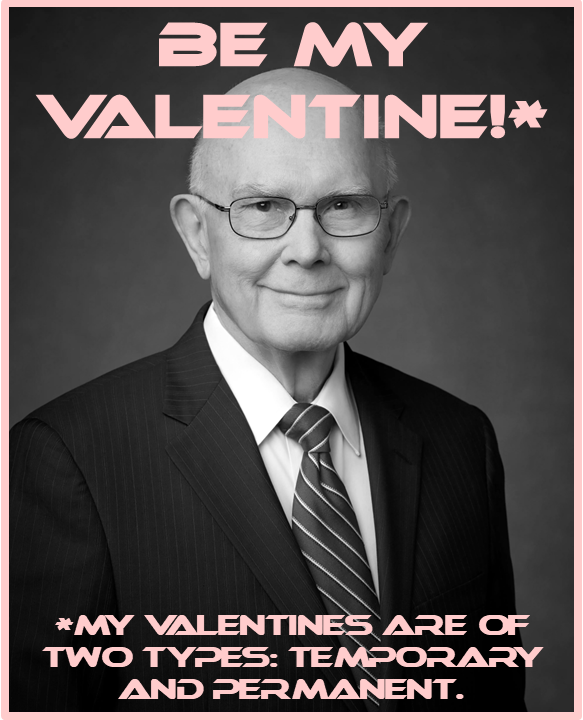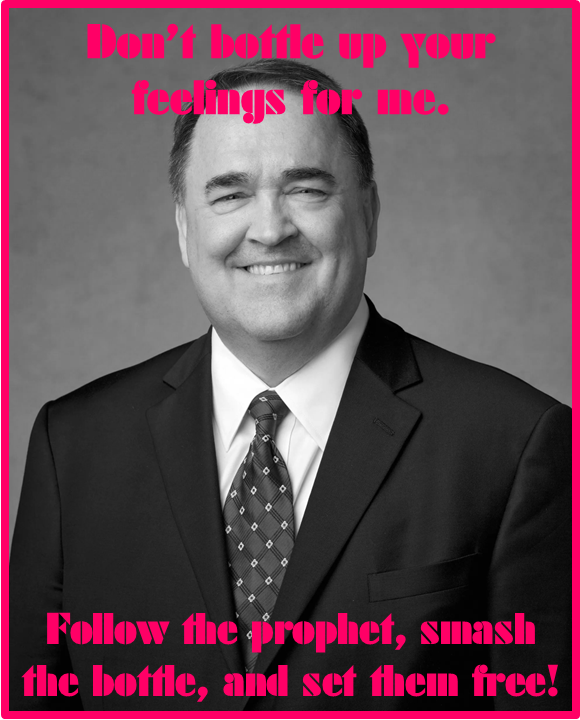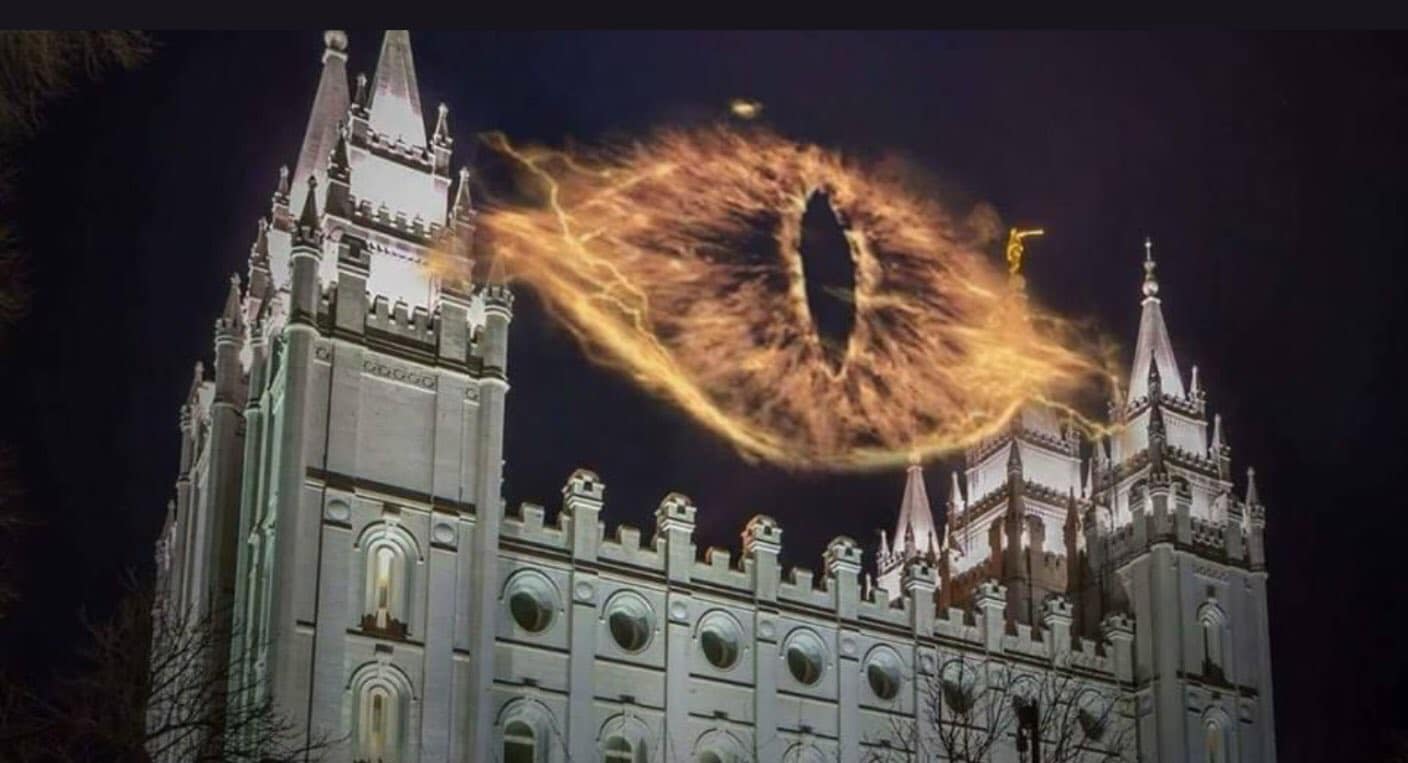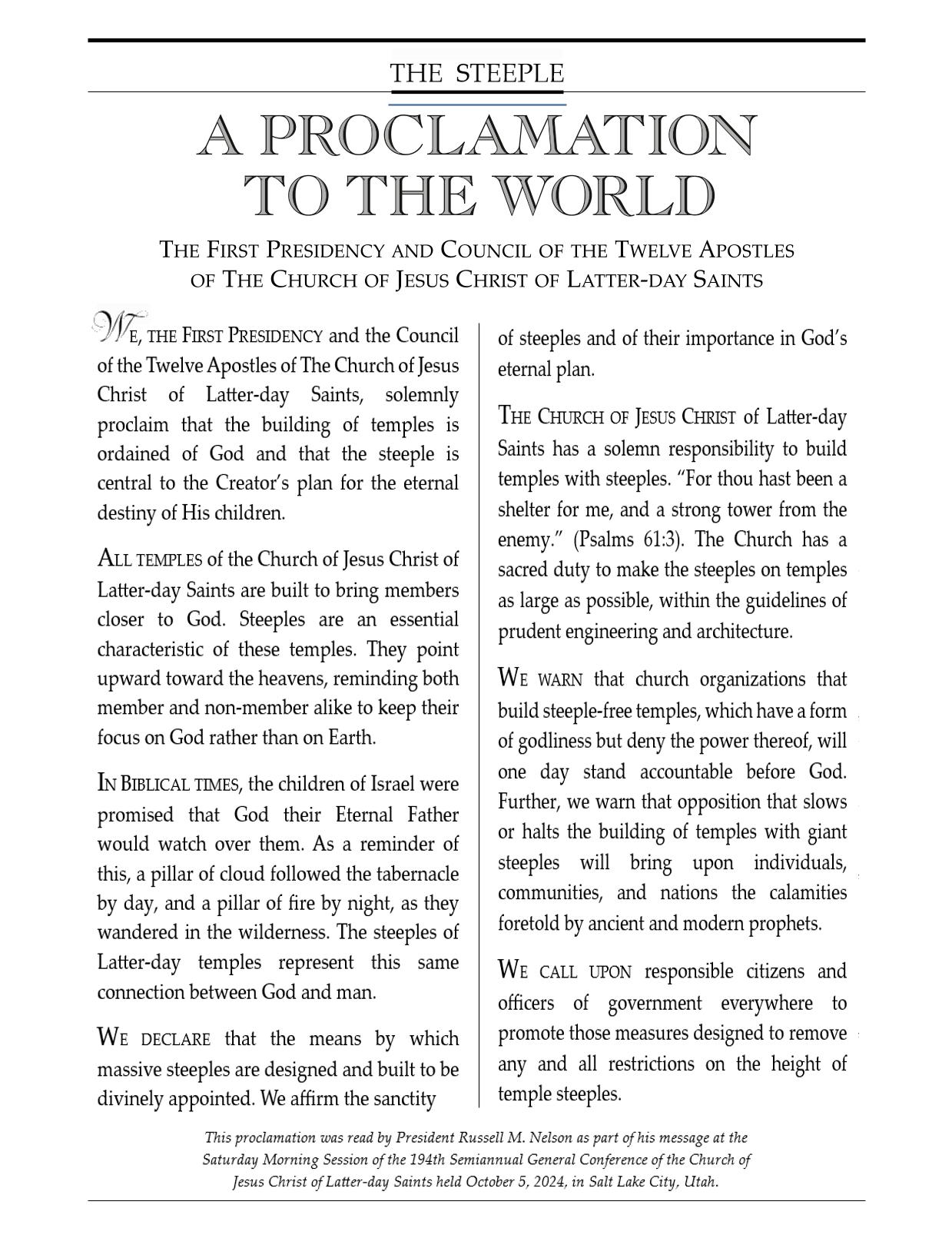Best hymn: “Oh, What Songs of the Heart,” Saturday evening. It gets bonus points for mention of Heavenly Parents, but I really liked it musically too.
Worst hymn: “Lord, I Would Follow Thee,” Sunday morning. This was just very bland.
Fastest hymn: “The Lord Is My Light,” Saturday evening.
Slowest hymn: “Did You Think to Pray?” Saturday morning.
Best and worst choir: I really liked the Utah Valley Institute choir that sang Saturday evening. I was much less a fan of the BYU-I choir that sang Saturday afternoon. It wasn’t a knock on their singing; I just felt like the arrangements they sang had weird pacing changes. (Sorry, as a music noob, I can’t explain it any better.)
Longest prayer: 167 seconds, S. Gifford Nielsen, Saturday morning invocation.
Shortest prayer: 51 seconds, Emily Belle Freeman, Saturday afternoon benediction. I appreciated that she didn’t force herself to use proper prayer pronouns.
Unsurprising prayer difference: Men gave eight prayers, with the shortest being 93 seconds (average of 114 seconds). Women gave two prayers, with the longer being 68 seconds.
Best slip of the tongue: While conducting the Sunday afternoon session, Quentin L. Cook welcomed us to the 109th annual General Conference. (It was actually the 194th.)
Best title: Patrick Kearon, “God’s Intent Is to Bring You Home”
Overdone title: Dale G. Renlund, “The Powerful, Virtuous Cycle of the Doctrine of Christ” I didn’t realize until I read the talk that he was quoting Russell M. Nelson, who has a love of hyperbole.
Longest talk: D. Todd Christofferson, 1961 words. (He also gave the longest talk among Q15 members last conference.)
Shortest talk: Susan H. Porter, 1252 words.
Best laugh:
- Dale G. Renlund showed with his hands the sizes of the tiny waves that knocked him off his kayak.
- Massimo De Feo told how his wife told him the reason he didn’t remember them having any major problems was that he had a short memory.
Strangest joke: Jeffrey R. Holland, who hadn’t given a talk in a couple of conferences because of health issues, joked that it was because he gave a bad talk last time. He said that he was at risk of being banned again, “positioned on a trapdoor with a very delicate latch.” While I appreciate his willingness to laugh at himself, I found this an odd choice of jokes precisely because we have seen that speakers don’t get removed from the rotation if they do bad things. You can try to stealth canonize your favorite proclamation and still come back. You can openly set up a money-making scheme and still come back. It seems like a weird thing to call attention to.
Bad pattern: There was wall-to-wall discussion of temples and covenants. Two speakers—J. Anette Dennis and Dallin H. Oaks—brought up temple garments, which I feel like are mentioned in conference rarely if ever. (Gerrit W. Gong even exhorted members to buy our own temple clothes.) I have to wonder if President Nelson has noticed that maybe all the new temples he’s announcing aren’t drawing as much new patronage as he had hoped, so now he’s trying to drum up some more traffic to make them look more successful. This discussion showed up in some strange lines:
- Jack N. Gerard said that in performing the atonement, Jesus “fulfilled the covenant He had made with His Father.” I feel like I’ve never heard this called a covenant before. Is this new doctrine?
- Andrea Muñoz Spannaus said that “obeying our covenants” is one key to drawing on the power of Christ. Obeying? I’ve heard keeping, but a covenant isn’t a commandment or a rule.
- Ulisses Soares assured us that “having the spirit of the Lord’s house in us changes us, completely.” Wait, so the temple has its own spirit now? Is the Holy Ghost at risk of being displaced?
Beloved buzzwords:

- Russell M. Nelson’s “think celestial” line from last conference was picked up and repeated by a number of speakers, sometimes in strange ways. For example, Neil L. Andersen, with a reference to D&C 87, said that “[The Lord] spoke of a righteous people resisting the deceptions of the adversary, disciplining their faith, thinking celestial, . . .” Really? He spoke of that?
- There’s clearly been a push to call temples “houses of the Lord.” This often sounds clumsy. For example, here’s the opening to David A. Bednar’s talk: “During a recent open house and media day for a new house of the Lord, . . .” Of course, President Nelson has also pushed to use the full name of the Church, regardless of how or where it doesn’t fit, so he’s clearly not one to be deterred by verbal clumsiness.
- Ronald A. Rasband appears to not be able to give a talk without saying “by divine design.”
Read More


 Best image: I like Robert Zund’s Road to Emmaus painting that
Best image: I like Robert Zund’s Road to Emmaus painting that 





 Best image: I really like Yongsung Kim’s painting The Hand of God that
Best image: I really like Yongsung Kim’s painting The Hand of God that 








